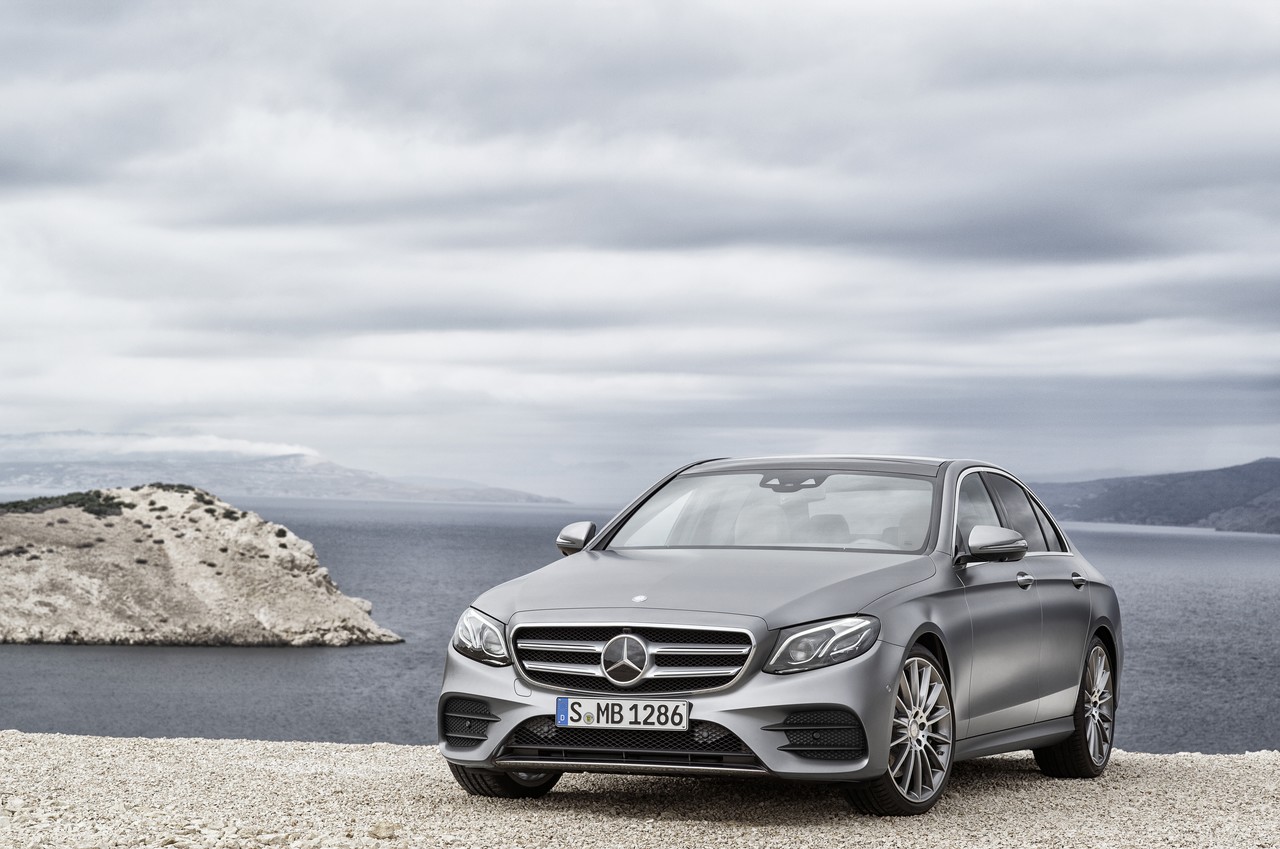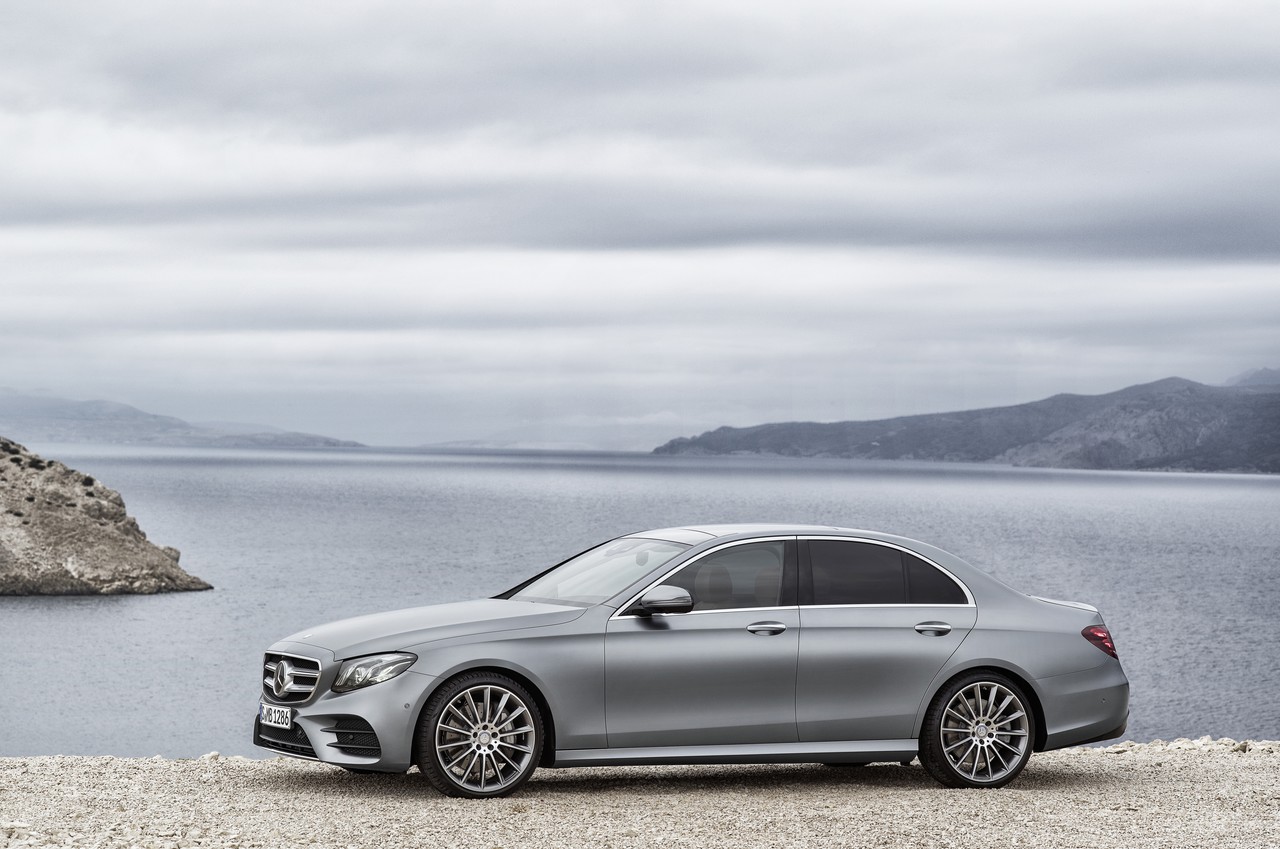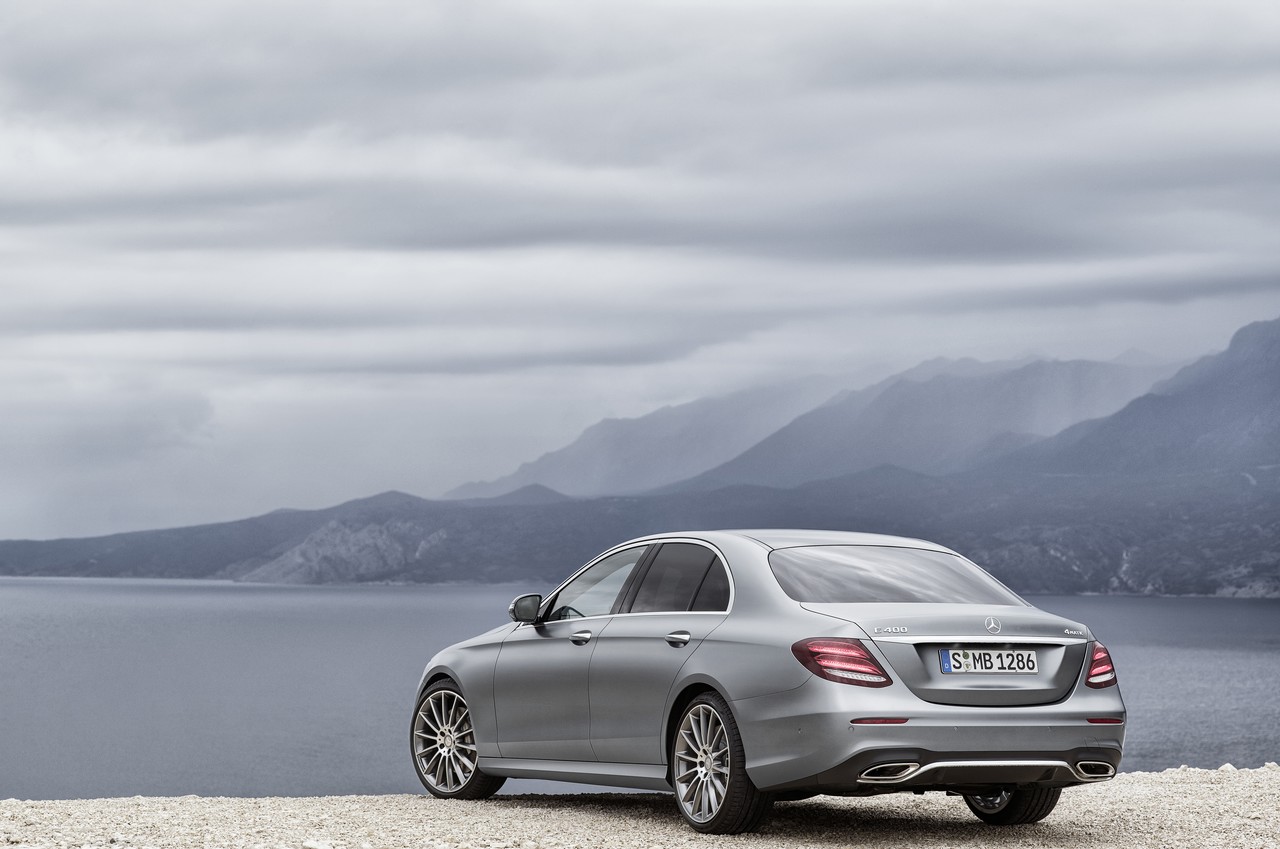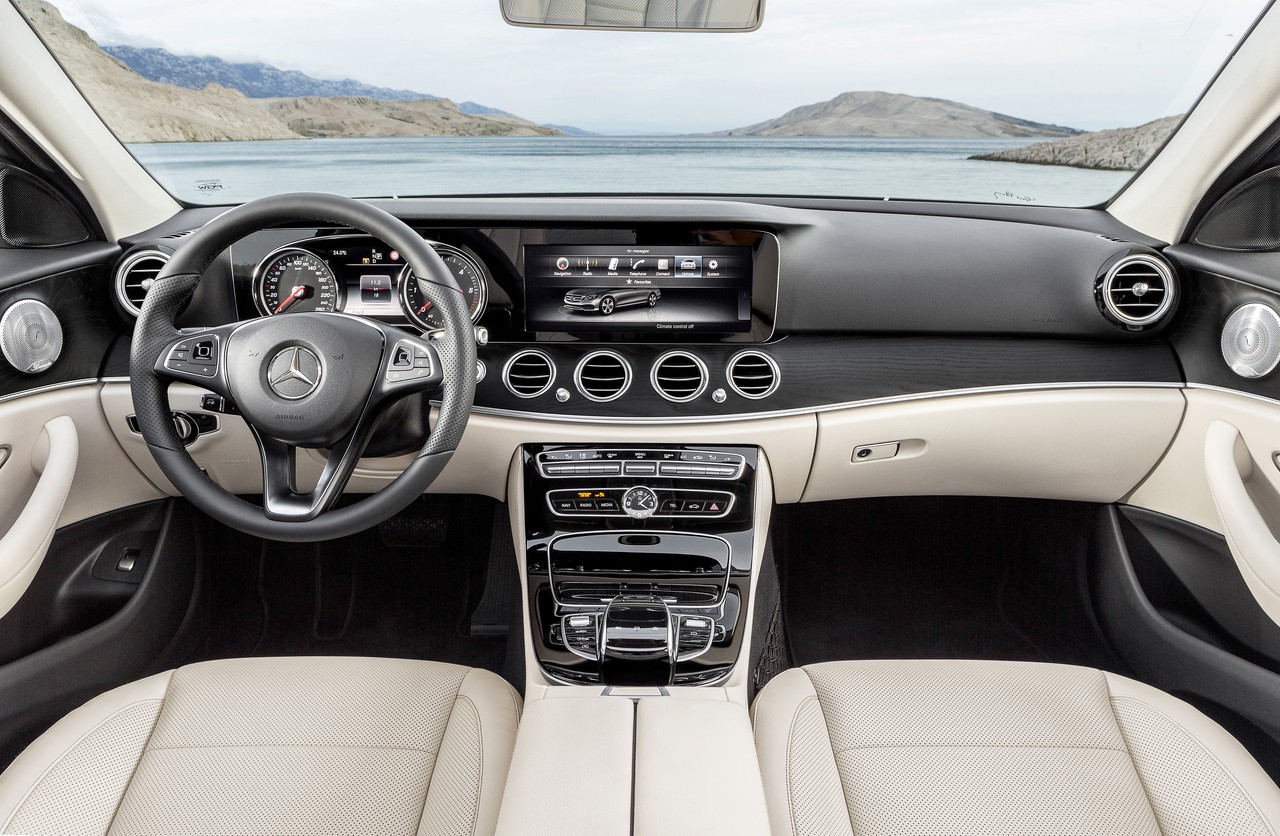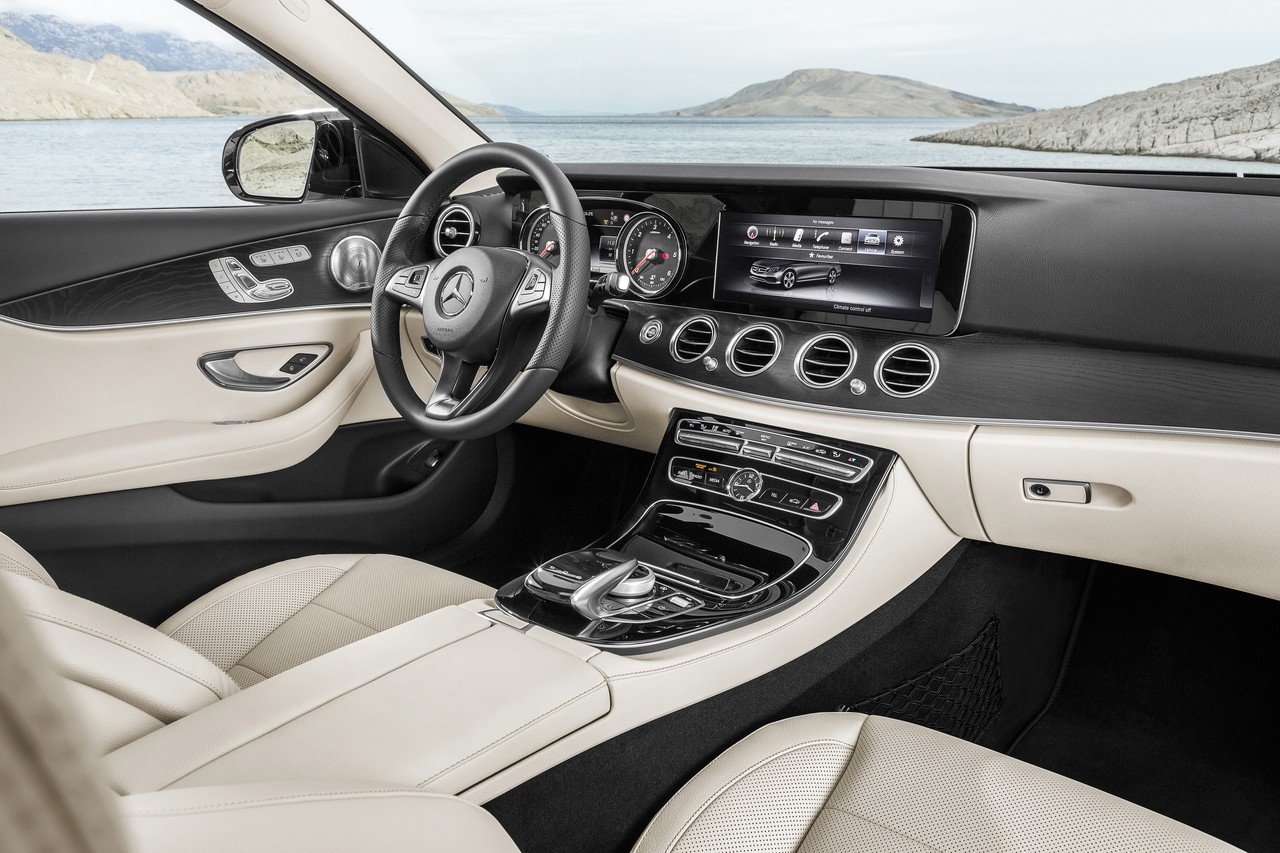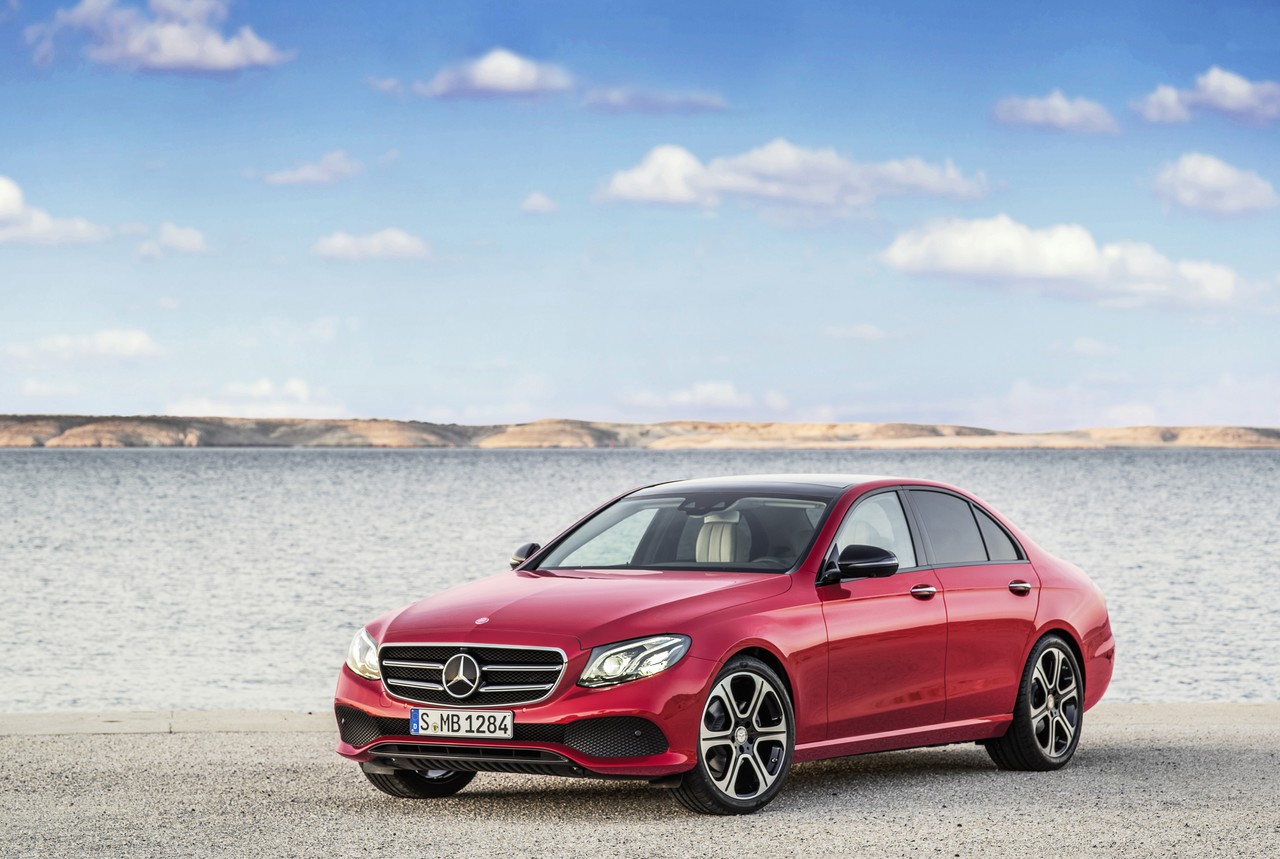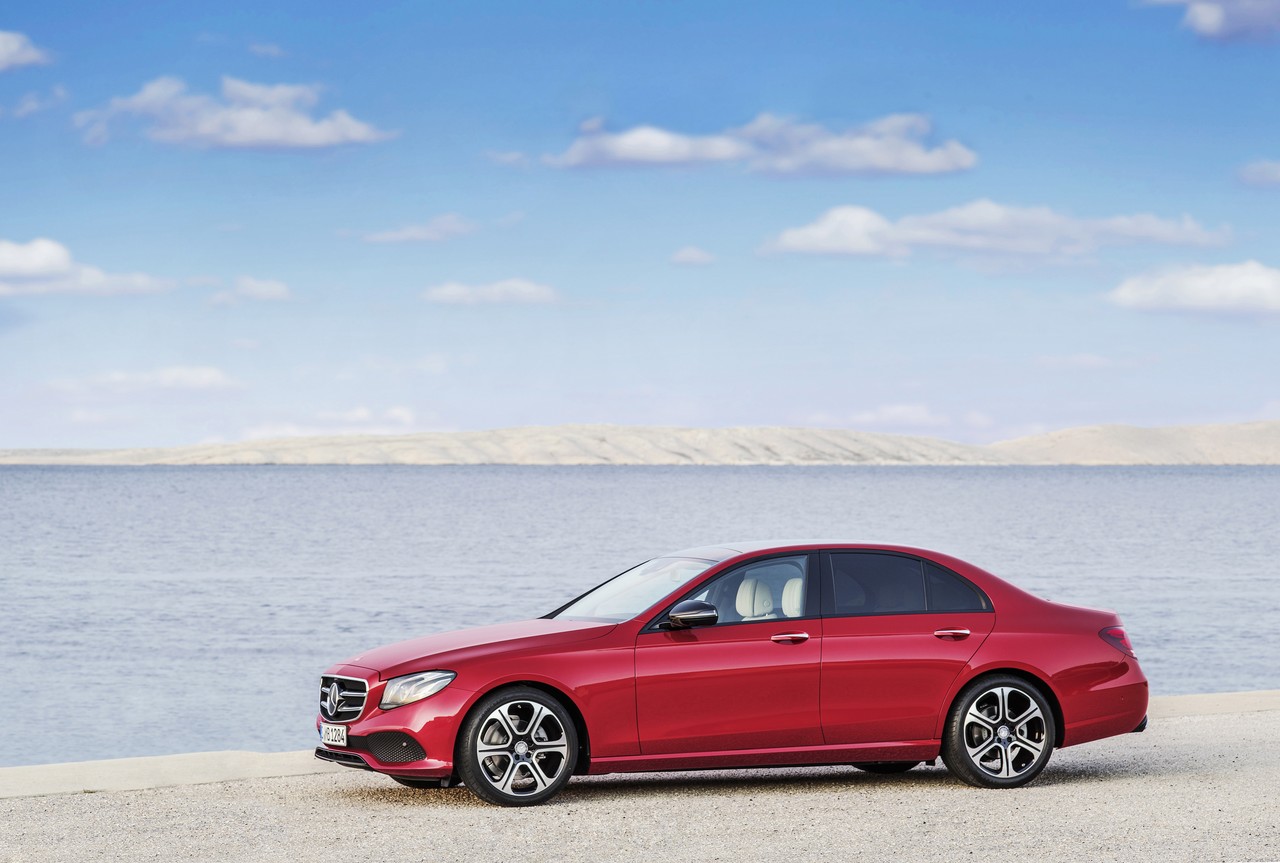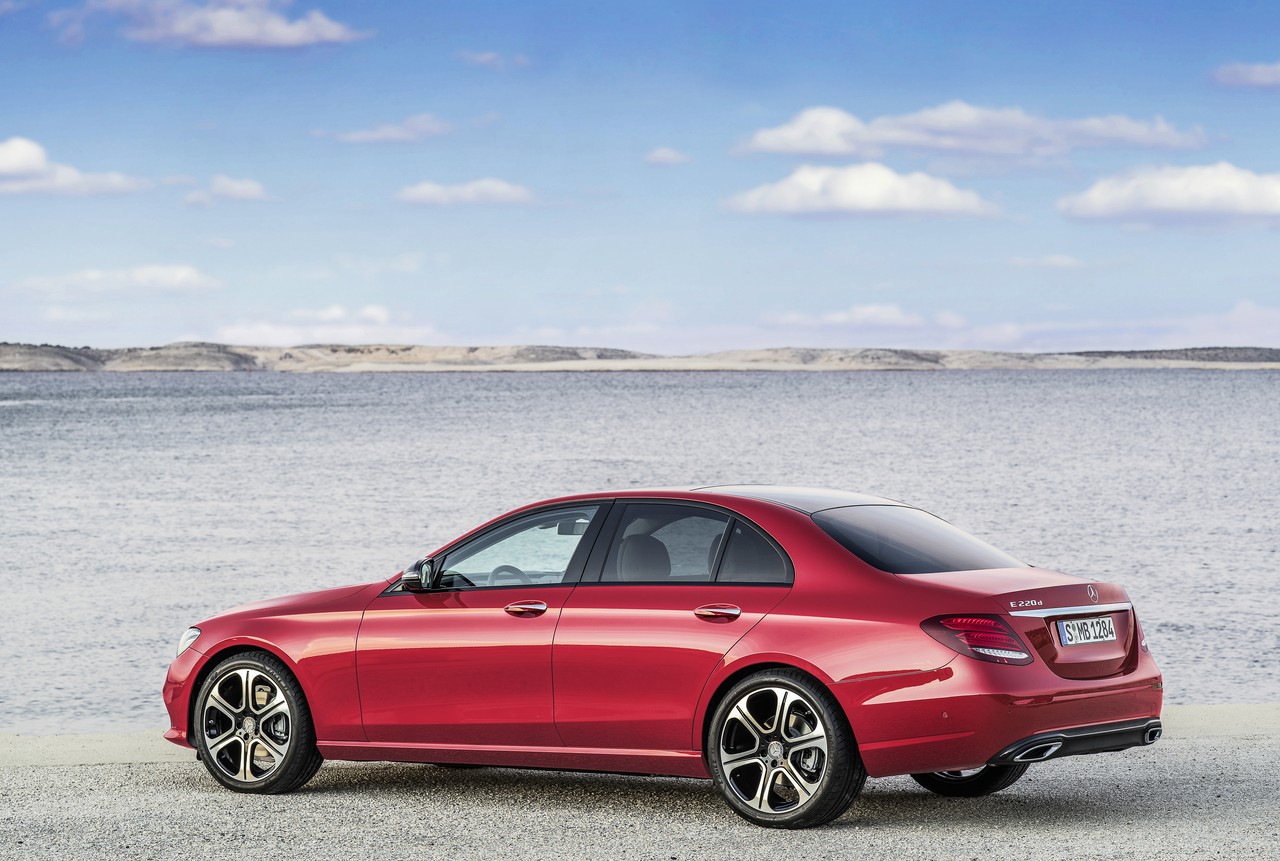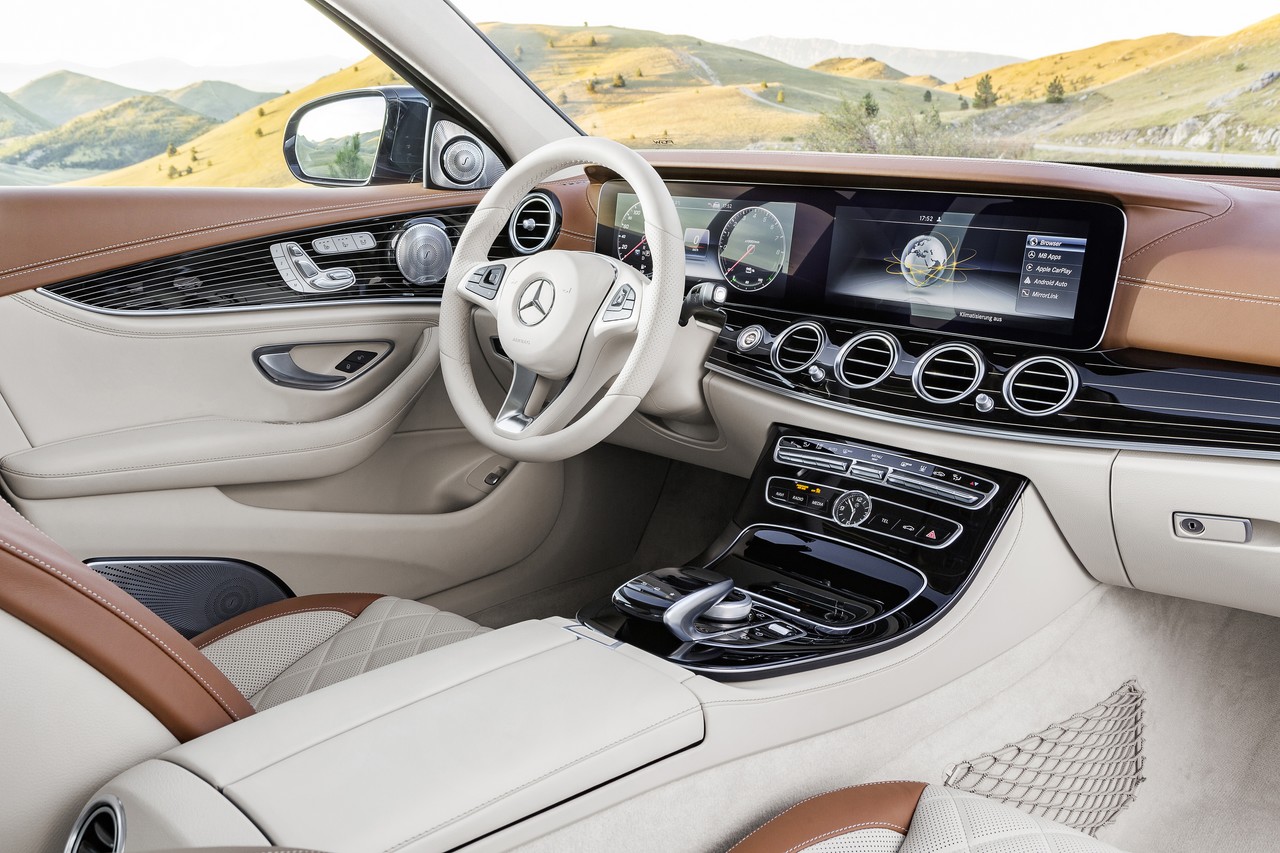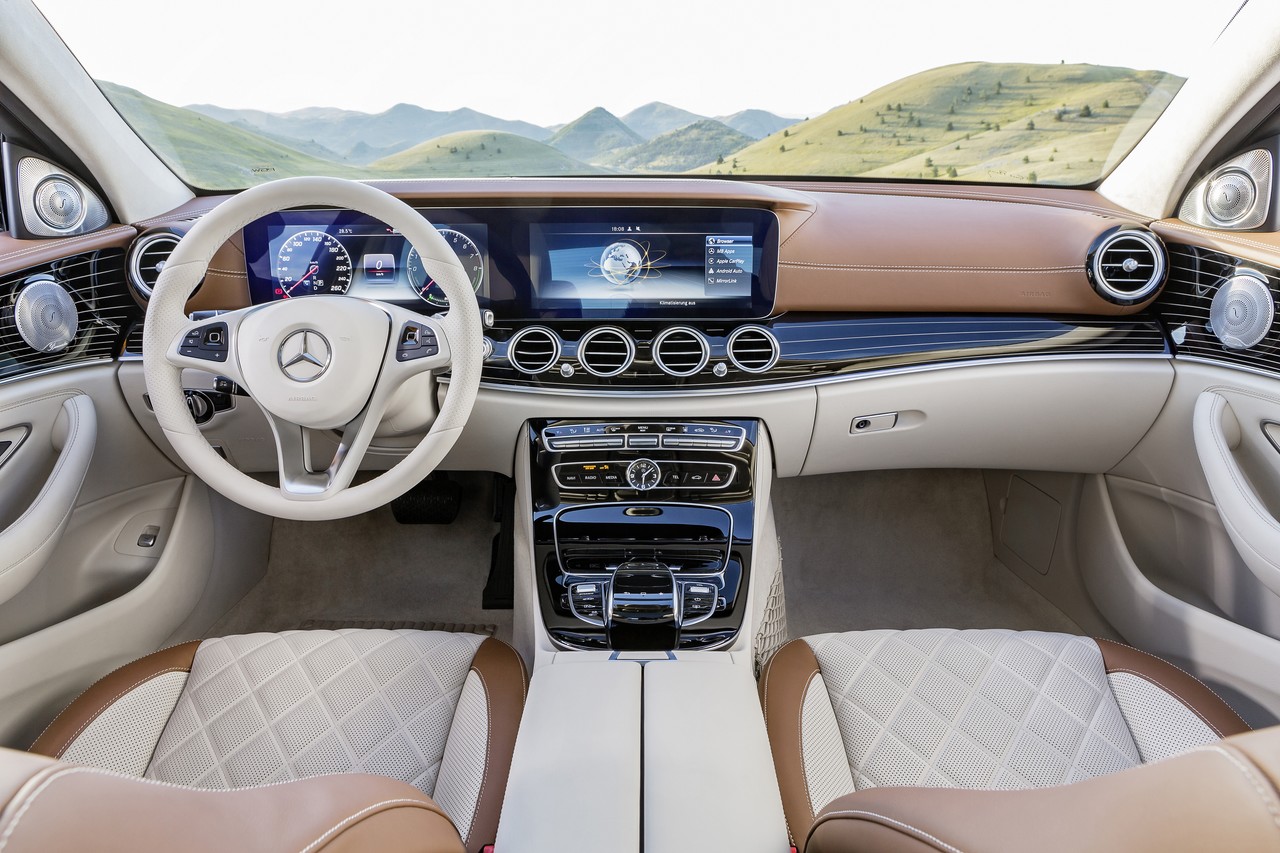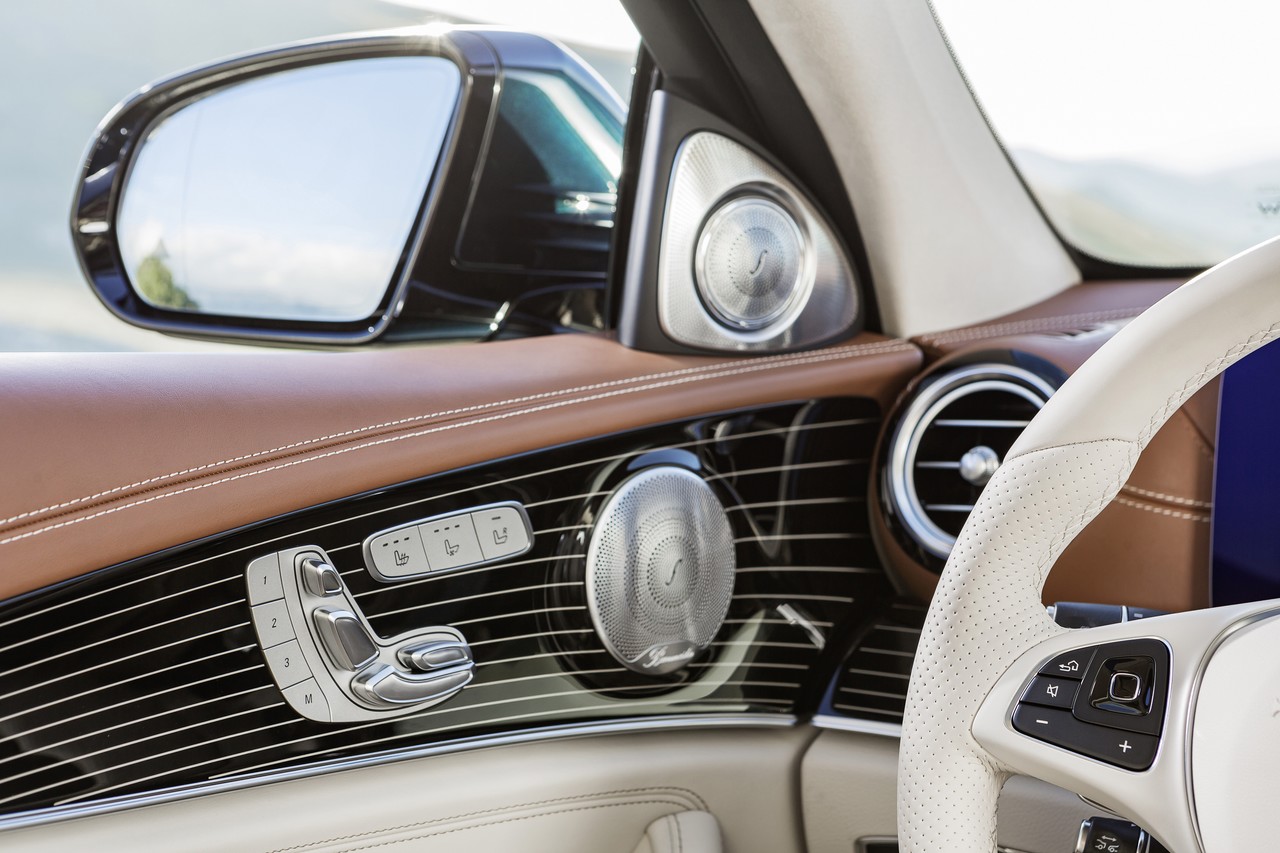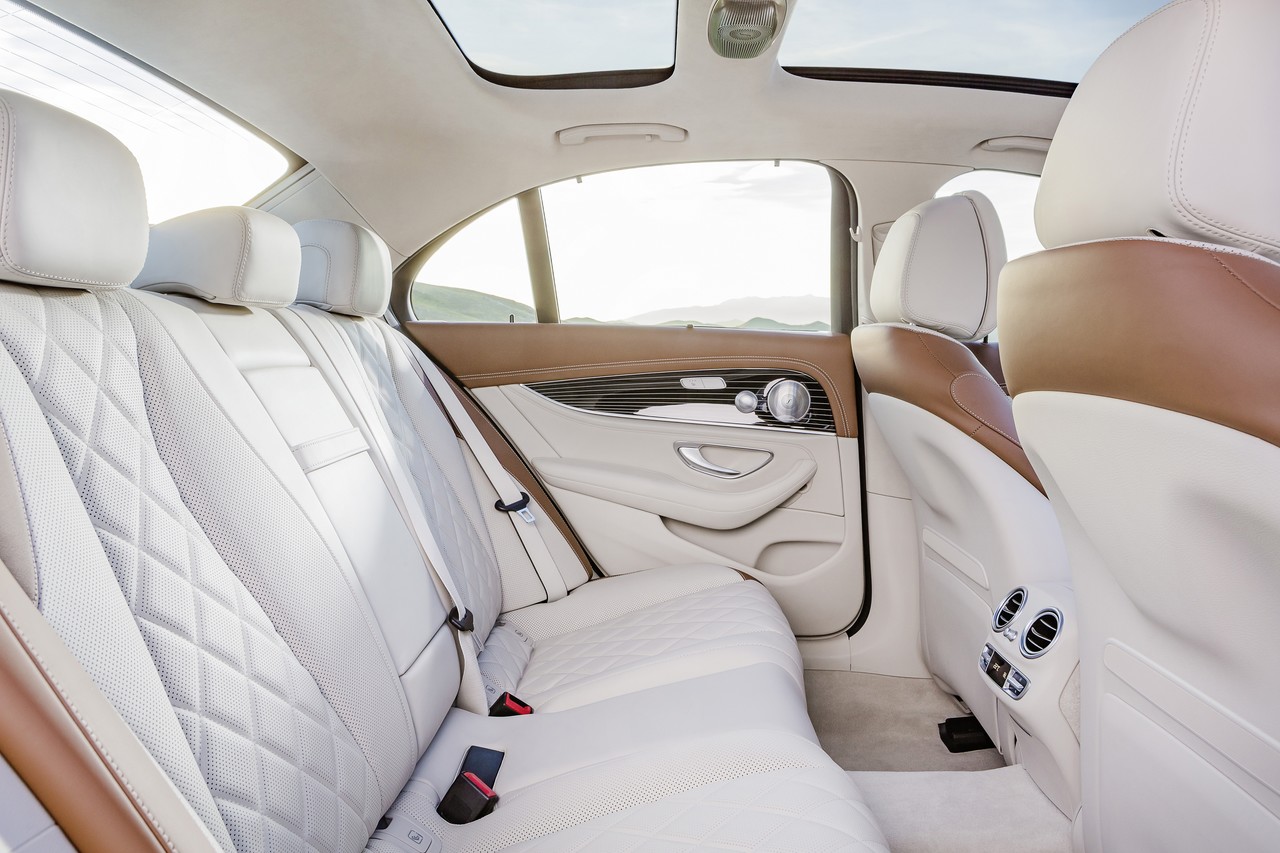
- Five star safety rating and active technologies fitted as standard
- High standard of interior fit and finish
- Quiet, well-insulated cabin
- Comfortable ride with standard steel suspension
- Well-weighted steering
- Slow steering lacks feedback
- For steel suspension, body control falls short of rivals on uneven roads
- Less rear seat space than Audi C7 A6
- Diesel engine noise when pushed
Overview
Released in Australia in July 2016, the Mercedes-Benz W213 E-Class was an executive sedan. Manufactured Sindelfingen, Germany, the Mercedes-Benz W213 E-Class range initially consisted of the E 200, E 220 d and E 350 d models, with the E 300 and E 400 4MATIC following in late 2016 and the E 350 plug-in hybrid e in early 2017. Please note that the Mercedes-AMG E213 E 43, E 53 and E 63 have been reviewed separately.
In September 2018, the Mercedes-Benz W213 E-Class range was revised as the E 300 and E 350 e models were withdrawn from the Australian market, while the E 400 4MATIC was replaced by the E 450 4MATIC. The W213 E 350 d was also powered by Mercedes-Benz’s OM656 diesel engine .
For Mercedes-Benz W213 E-Class models, all engines were mated to Mercedes-Benz’s nine-speed ‘9G-Tronic’ automatic transmissions and had an ECO start/stop function that the engines to shut down when the vehicle was stationary in traffic.
| Model | Engine | Trans. | Peak power | Peak torque |
|---|---|---|---|---|
| E 200 (2016-on) |
2.0-litre M274 turbo petrol I4 | 9sp auto | 135 kW at 5500 rpm | 300 Nm at 1200-4000 rpm |
| E 300 (2016-18) |
2.0-litre M274 turbo petrol I4 | 9sp auto | 180 kW at 5550 rpm | 370 Nm at 1300-4000 rpm |
| E 350 e plug-in hybrid (2017-18) |
2.0-litre M274 turbo petrol I4 | 9sp auto | 155 kW at 5500 rpm | 350 Nm at 1200-4000 rpm |
| Electric motor | 60 kW | 440 Nm | ||
| Combined | 210 kW | 600 Nm | ||
| E 400 4MATIC (2016-18) | 3.0-litre M276 biturbo petrol V6 | 9sp auto | 245 kW at 5250-6000 rpm | 480 Nm at 1400-4000 rpm |
| E 450 4MATIC (2018-on) |
3.0-litre M276 biturbo petrol V6 | 9sp auto | 270 kw at 5250-6000 rpm | 500 Nm at 1200-4000 rpm |
| Model | Engine | Trans. | Peak power | Peak torque |
|---|---|---|---|---|
| E 220 d (2016-on) |
2.0-litre OM654 turbo-diesel I4 | 9sp auto | 143 kW at 3800 rpm | 400 Nm at 1600-2800 rpm |
| E 350 d (2016-18) |
3.0-litre OM642 turbo-diesel V6 | 9sp auto | 190 kW at 3400 rpm | 620 Nm at 1600-2400 rpm |
| E 350 d (2018-on) |
2.9-litre OM656 biturbo diesel I6 | 9sp auto | 210 kW at 3400-4600 rpm | 600 Nm at 1200-3200 rpm |
Body and dimensions
According to Mercedes-Benz, the body of the W213 E-Class had ‘a far higher proportion of aluminium and ultra-high-strength steel components’ than the W212 E-Class. To minimise mass, the front wings, bonnet, boot lid and large sections of the front and rear ends are made of sheet or cast aluminium.
Compared to the Mercedes-Benz W212 E-Class which it replaced, the W213 E-Class was 57 mm longer (at 4925 mm), 2 mm narrower (1852 mm), 6 mm taller (1470 mm) and had a 65 mm longer wheelbase (2939 mm). Within the E-Class range, certain models had a drag coefficient of 0.23 Cd and were fitted with Mercedes-Benz’s ‘Airpanel’ shutter system which opened the radiator grille via adjustable louvres and featured a second shutter in the air intake beneath the number plate.
Suspension
The Mercedes-Benz W213 E 200 and E 200 d had steel suspension as standard and three ‘Direct Control’ suspension systems with selective damping:
- Comfort suspension;
- Avantgarde suspension with a sportier character which is lowered by 15 mm; and,
- Sports suspension which is lowered by 15 mm and includes adaptive dampers.
For Australia, the Mercedes-Benz W213 E 300, E 350 e, E 350 d and E 400 4MATIC had Mercedes-Benz’s ‘Air Body Control’ multi-chamber air suspension which consisted of:
- Two chambers of different sizes in the spring struts of the front axle; and,
- Three chambers of different sizes in the spring struts of the rear axle.
The Air Body Control suspension adjusted, in three stages, how stiffly the suspension reacts. Furthermore, Air Body Control suspension included a continuously operating, electronically controlled damping adjustment system which adjusted damping at each individual wheel according to the driving situation (including evasive manoeuvres) and road conditions.
The Air Body Control suspension included all-round self-levelling which adjusted ride height according to vehicle speed, enabling it to reduce the vehicle’s aerodynamic drag and therefore fuel consumption. When driving on rough roads, ground clearance could also be increased via the ride height adjustment switch.
For the Air Body Control suspension, the ‘Dynamic Select’ switch enabled the driver to select from Comfort, Eco, Sport, Sport+ and Individual drive modes.
Safety equipment
Standard safety equipment for the Mercedes-Benz W213 E-Class included dual front airbags, a driver’s knee airbag, front and rear side airbags, full-length curtain airbags, ABS, electronic brake force distribution, brake assist, electronic stability control, traction control and front seatbelts with pre-tensioners and load limiters.
As standard, the Mercedes-Benz W213 E-Class had an ‘active bonnet’ which, in the event of a pedestrian collision, triggered a pyrotechnic charge to raise the height of the bonnet and provide additional clearance to ‘hard points’ within the engine bay.
As standard, Australian-delivered Mercedes-Benz W213 E-Class vehicles were fitted with the ‘Driving Assistance package Plus’ which included:
- Drive Pilot: operated at speeds up to 210 km/h and could control the distance from the vehicle ahead, vehicle speed and steering via the following functions:
- Distance Pilot Distronic: adaptive cruise control that could maintain a safe distance from a vehicle ahead at speeds of up to 210 km/h and in stop/start traffic. An extended restart function also enabled automatic starting of the vehicle within 30 seconds after a stop that was initiated by Distance Pilot Distronic;
- Steering Pilot: used a camera to detect road markings and vehicles ahead so that Steering Pilot could follow the vehicles ahead even on roads with several lanes or unclear road markings. Steering Pilot could also provide steering assistance for ‘moderate bends’;
- Active Emergency Stop Assist: if the driver removed their hands from the steering wheel, warnings would be issued that directed the driver to grip the steering wheel. If the driver did not respond, Active Emergency Stop Assist would bring the vehicle to a standstill within its lane;
- Active Lane Change Assist: a radar- and camera-based system which assisted the driver when changing lanes on multi-lane roads and could steer the vehicle into the lane selected by the driver. Once the driver had indicated to turn for at least two seconds, the Active Lane Change Assist would steer the vehicle into the adjacent lane if it detected that the lane was unoccupied;
- Active Brake Assist with cross-traffic function: extended speed thresholds for autonomous braking (‘Active Brake Assist’) for vehicles and pedestrians. The Active Brake Assist with cross-traffic function could detect crossing traffic at junctions and, if the driver failed to respond, apply the brakes autonomously. Furthermore, it could detect hazardous situations at the tail-end of traffic jams (where there was no room to manoeuvre) and initiate autonomous braking far sooner in such situations. Consequently, it was possible to avoid accidents at speeds up to 100 km/h or substantially reduce the severity of accidents at speeds above this level;
- Evasive Steering Assist: complements the pedestrian detection function of Active Brake Assist. When the driver deliberately or instinctively performs an evasive manoeuvre in a dangerous situation, this function can assist by adding precisely calculated steering torque to support the movement of the steering wheel – this helps the driver to avoid the pedestrian in a controlled manner while helping to ‘straighten up’ the vehicle afterwards;
- Active Blind Spot Assist: active at speeds above 60 km/h, a corrective braking force would be applied to the wheels on one side of the vehicle if the driver attempted to change lanes when a vehicle was detected in the driver’s blind spot;
- Active Lane Keeping Assist: would initiate steering wheel vibrations if the vehicle approached a continuous lane marking line and, if crossed, would automatically brake wheels on one side of the vehicle to return the vehicle within the lane;
- Pre-Safe Plus: could anticipate rear-end collisions and warn following traffic by flashing the rear hazard warning lights at high frequency; and,
- Pre-Safe Impulse Side: if a lateral collision was imminent, Pre-Safe impulse side moved the driver or front passenger laterally away from the danger zone by inflating an air chamber in the side bolster of the front seat backrest nearest the side of the imminent impact – this action increased the distance between occupant and door, thereby reducing the forces acting on the occupants.
As standard, the Mercedes-Benz W213 E-Class was also equipped with:
- Attention Assist with adjustable sensitivity: operated at speeds in excess of 80 km/h and monitored driver behaviour and steering movements for signs of drowsiness; if detected, the driver was provided with visual and audible warnings; and,
- Crosswind Assist: could detect sudden, strong gusts of wind and prevent the vehicle from drifting out of its lane via corrective braking forces on one side of the vehicle.
From September 2018, the Mercedes-Benz W213 E-Class was equipped with Traffic Sign Assist (TSA) which used navigation data and image recognition to display – in the instrument cluster – the maximum permitted speed, restrictions on overtaking and pedestrian warnings near ‘zebra’ crossings. Traffic Sign Assist also had an extended wrong-way warning, while the detection of stop signs was combined with the ECO start/stop function so that the engine remained on. Furthermore, Active Speed Limit Assist was a sub-function of Traffic Sign Assist that used the forward-facing camera to recognise sign gantries and road works signs to set the vehicle’s maximum speed.
Euro NCAP testing
In Euro NCAP testing , the Mercedes-Benz W213 E-Class Sedan received a five star safety rating which included a 95 per cent adult occupant protection rating and a 90 per cent child occupant protection rating. In the frontal offset test, protection of the driver’s head, thighs and feet were rated as good, though chest and lower leg protection were rated as adequate (i.e. a slight risk of serious injury). Maximum points were awarded in the side impact test; in the more severe pole test, however, chest protection for the driver was rated as adequate.
Features: Mercedes-Benz W213 E 200 and E 220 d
As standard, the Mercedes-Benz W213 E-Class was equipped with the COMAND Online Infotai Nment system which included a high-resolution display, digital radio tuner (DAB+), HDD navigation with 3D maps and dynamic route guidance, internet connectivity, smartphone integration via Android Auto or Apple CarPlay.
Standard features for the Mercedes-Benz W213 E 200 and E 220 d included 8.0J x 18-inch five-spoke alloy wheels with 245/45 R18 runflat tyres, ‘Thermatic’ dual-zone climate control air conditioning, ‘Artico’ synthetic leather upholstery, power adjustable front seats, LED headlights with integral daytime running lights, dusk-sensing headlights, rain-sensing wipers, front and rear parking sensors, a Nappa leather steering wheel with gearshift paddles, 40:20:40 split-folding rear seat backrests, remote central locking with proximity key, power adjustable and heated door mirrors with folding function, power windows, a power adjustable steering wheel (for height and reach), memory settings (for the front seats and door mirrors), an auto-dimming rear-view mirror, push-button start, ambient interior lighting, an analogue clock, velour floor mats, a black roof liner, a 12 volt power socket, a tyre pressure loss indicator, a trip computer and an immobiliser. Inside, the Mercedes-Benz E 200 and E 220 d could be specified with ‘Black Ash Open-Pore Wood’ or ‘Black Piano-Lacquer look’ trim for the centre console
As standard, the Mercedes-Benz E 200 and E 220 d were also equipped with:
- A rear view camera with dynamic guidelines;
- A 360 degree camera system which provided a bird’s eye view of the vehicle on the centre display and dynamic guidelines; and,
- Parking Pilot with Parking Assist: automatically engaged when driving at speeds up to 30 km/h, Parking Pilot could identify parallel and right angle parking spaces. Furthermore, the Parking Assist function could provide automated steering to manoeuvre the vehicle into the space while the driver controlled vehicle speed.
Features: Mercedes-Benz W213 E 300
Compared to the E 200 and E 220d, the Mercedes-Benz E 300 was further equipped with 8.0J x 20-inch front and 9.0J x 20-inch rear AMG fourteen-spoke alloy wheels, leather upholstery, heated front seats and illuminated front door sills with ‘Mercedes-Benz’ lettering. The Mercedes-Benz E 300 was also equipped with multi-beam LED headlights which consisted of 84 individually controlled LEDs and enabled the light distribution from the headlights to be controlled separately to avoid dazzling other road users.
Features: Mercedes-Benz E 350 e plug-in hybrid
Relative to the E 300, the Mercedes-Benz E 350 e was fitted with 19-inch ten-spoke alloy wheels, a 590 watt Burmester surround sound system with thirteen speakers and a nine-channel digital sound processing (DSP) amplifier, pre-entry climate control, a head-up display with virtual image windscreen projection and a panoramic glass sunroof with roller sunblind. The Mercedes-Benz E 350 e was also supplied with a charging cable.
Features: Mercedes-Benz E 350 d and E 400
Compared to the Mercedes-Benz E 350 e, the E 350 d and E 400 were fitted with 20-inch AMG fourteen-spoke alloy wheels as per the E 300.
September 2018 update
As noted above, the Mercedes-Benz W213 E-Class Sedan range was updated in September 2018. As part of this update, all models were fitted with new steering wheels that featured touch controls. Beyond this, the W213 E 200 and E 220 d were equipped with ‘Adaptive Highbeam Assist’ as standard could be specified with a ‘Sport Edition’ package. The Sport Edition package had a Manufacturer List Price of $10,500 and included 20-inch AMG alloy wheels, a Burmester surround sound system, leather upholstery, heated front seats, a head-up display, panoramic sunroof, AMG body styling and metallic paint.
For the specifications of all post-September 2018 Mercedes-Benz W213 E-Class Sedans, please refer to the specifications document, below.
Brochure and specifications
- Brochure: Mercedes-Benz W213 E-Class Sedan (July 2016)
- Specifications: Mercedes-Benz W213 E-Class Sedan (November 2016)
- Specifications: Mercedes-Benz W213 E-Class Sedan (July 2018)
Related links
- Daimler Media – The new E-Class: The most intelligent business saloon
- Mercedes-Benz: The new E-Class
